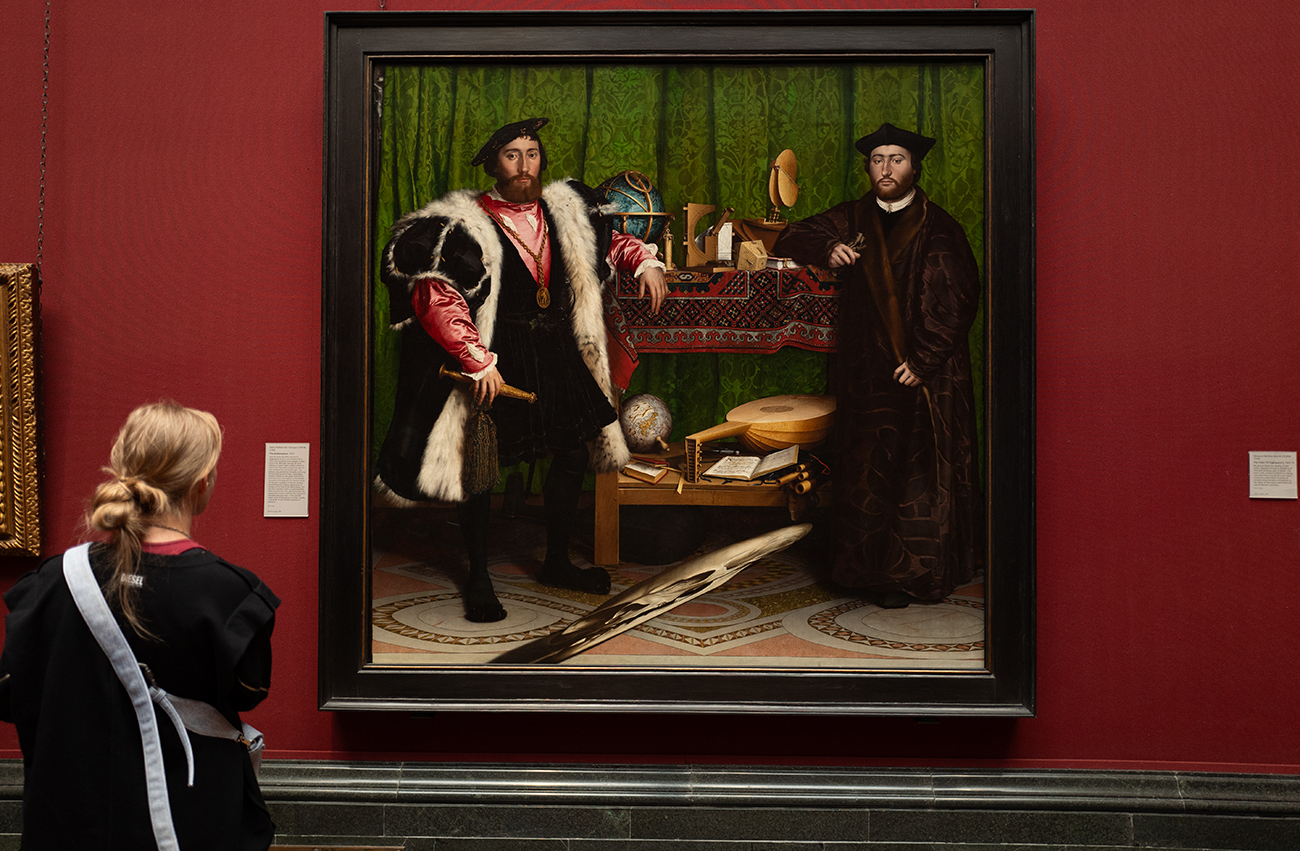“The Ambassadors,” painted by Hans Holbein the Younger in 1533, is a masterpiece that exemplifies the remarkable precision and artistic mastery of the Northern Renaissance. Currently housed in the National Gallery, London, this painting continues to intrigue viewers and scholars with its intricate details, symbolism, and the distinct use of anamorphosis, making it truly unparalleled in art history.
Holbein’s brushwork in “The Ambassadors” is a testament to his meticulous attention to detail and his ability to infuse lifelike qualities into his subjects. This double portrait features two figures, Jean de Dinteville and Georges de Selve, surrounded by an array of objects that symbolize various aspects of knowledge and culture, such as a globe, a sundial, and musical instruments. The precise rendering of textures, from the sheen of the silk and the fur trim of the clothing to the metallic glint of the scientific instruments, demonstrates Holbein’s unparalleled skill in capturing the material world with astonishing realism.
What sets this masterpiece apart from many other works is the use of anamorphosis—a distorted projection that requires the viewer to view the image from a specific angle to see it correctly. In this painting, it manifests as the eerie skull that stretches diagonally across the foreground, seemingly an abstract smear until observed from the right perspective. This element adds a layer of complexity and invites contemplation on themes of mortality and the transient nature of life, a memento mori that contrasts sharply with the opulence depicted.
The symbolic depth and technical brilliance of this painting highlight Holbein’s extraordinary ability to blend artistic skill with intellectual insight. Despite advancements in technology and technique, no artist has quite matched Holbein’s unique combination of detailed realism, symbolic complexity, and inventive perspective play to create a single cohesive piece.
If this canvas of a genius were to be sold in today’s art market, its price would likely be astronomical, both due to its historic significance and its technical brilliance. Renaissance masterpieces, especially those by renowned masters like Holbein, rarely appear for sale. However, history shows us that such works can fetch anywhere from tens of millions to over a hundred million dollars, depending on provenance, condition, and market conditions. Given its importance, provenance from royal collections, and its rarity, it might well approach the upper end of that scale, cementing its status as a priceless gem in the annals of art history. Therefore, while assigning a precise price is speculative, consensus would likely place it among the most valuable paintings ever created.
Audio version:












